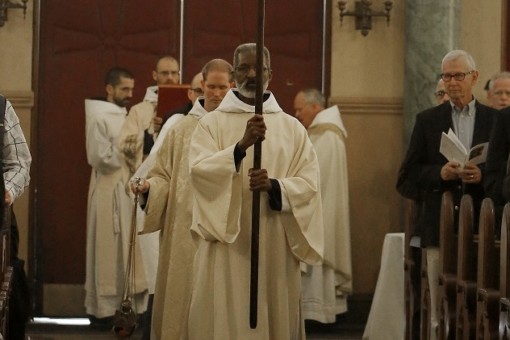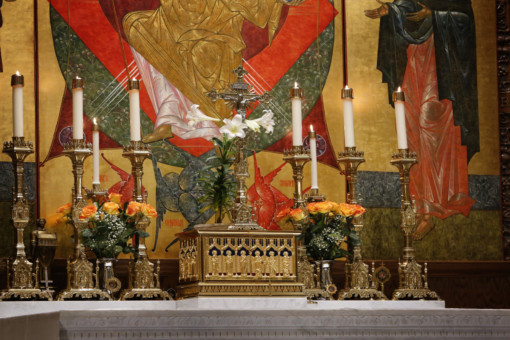About Us
At the Monastery of the Holy Cross, we follow the ancient Christian monastic way of life given in the Rule of Saint Benedict, seeking God through prayer, silence, work, and hospitality. We realize this in a unique way by living in the midst of the modern city, with its noise, distractions, and spiritual poverty. Our monastery provides an oasis of calm and quiet as we seek to evangelize through our witness of a life centered on the joyful and reverent celebration of the Church’s liturgy.
As Roman Catholic Benedictines, the key principal of our lives is ora et labora (prayer and work). We are a contemplative community, with prayer being our primary vocation. This means we do not engage in the active ministries, such as teaching, outside of the monastery.
We pray together, as a community, for about three hours a day. Our daily celebration of Mass and Divine Office is open to the public, and is sung in Latin and English. Our monastery has become known for specializing in Gregorian chant. Our prayer life also includes times for lectio divina, the reading of Scripture and other spiritual texts, and private prayer.
As times of prayer intersperse our entire day, so do periods of work. We engage in a variety of manual labors and crafts, including cooking, beer-brewing, cleaning, gardening, and machine repair, as well as iconography and musical composition. In keeping with the Benedictine vow of stability, we are committed to this particular monastery. Therefore, we bear the primary responsibility for our buildings and grounds, including the operation of our guesthouse: although we hire skilled tradespeople when necessary, we do all routine maintenance and administrative work ourselves.
Despite the challenge of living a traditional Benedictine life in a major city, we have been thriving since our founding more than a generation ago. We are members of the worldwide Subiaco-Cassinese Congregation, while being firmly rooted in Chicago’s famous Bridgeport neighborhood, where our historic church has been named an official Chicago Landmark.
Our diverse and growing community, whose talents and skills have been fundamental to our flourishing, seeks to continue its course of growth. This is an on-going challenge as we are self-supporting. We will need to provide proper living and work spaces for new members to the monastic community. Most of all, we hope to continue our growth, in order to share with an even greater number of people the joy of encountering Christ in the liturgy and in silent prayer. We are grateful for your support!


